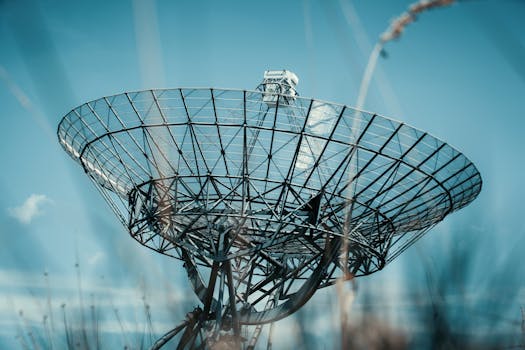
LEO Satellites: Revolutionizing Global Connectivity with Low Earth Orbit Technology
LEO satellites, or Low Earth Orbit satellites, are a type of satellite that operates at an altitude of around 160 to 2,000 kilometers above the Earth’s surface. This relatively low orbit allows LEO satellites to provide faster and more reliable connectivity than traditional satellite systems, which often operate at much higher altitudes. In this article, we will explore the benefits and applications of LEO satellites, as well as the current state of the technology and its potential for future development.
LEO satellites have several advantages over traditional satellite systems. One of the main benefits is their lower latency, which refers to the time it takes for data to travel from the Earth’s surface to the satellite and back again. Because LEO satellites are closer to the Earth, they can provide latency as low as 20-30 milliseconds, compared to several hundred milliseconds or even seconds for traditional satellite systems. This makes LEO satellites ideal for applications that require real-time communication, such as video conferencing, online gaming, and remote healthcare.
Applications of LEO Satellites
LEO satellites have a wide range of applications, including telecommunications, navigation, Earth observation, and scientific research. One of the most significant applications of LEO satellites is in the provision of broadband internet access to remote and underserved communities. By providing a reliable and high-speed internet connection, LEO satellites can help to bridge the digital divide and provide access to essential services such as education, healthcare, and financial services.
Another important application of LEO satellites is in the field of navigation. LEO satellites can provide accurate and reliable positioning information, which is essential for a wide range of applications, including aviation, maritime, and land transportation. LEO satellites can also be used for Earth observation, providing high-resolution images of the Earth’s surface and helping to monitor climate change, track natural disasters, and manage natural resources.
Current State of LEO Satellite Technology
The development of LEO satellite technology is rapidly advancing, with several companies and organizations launching constellations of LEO satellites in recent years. One of the most significant developments in LEO satellite technology is the use of small satellites, which are often referred to as CubeSats or nanosats. These small satellites are typically smaller than a shoebox and weigh less than 10 kilograms, making them much cheaper to launch and operate than traditional satellites.
Another significant development in LEO satellite technology is the use of phased arrays, which allow LEO satellites to communicate with multiple devices on the Earth’s surface simultaneously. This technology has the potential to increase the capacity of LEO satellite systems, making them more suitable for applications that require high-speed data transfer, such as video streaming and online gaming.
Future Development of LEO Satellites
The future of LEO satellites looks promising, with several companies and organizations planning to launch new constellations of LEO satellites in the coming years. One of the most significant developments in the future of LEO satellites is the integration of LEO satellites with other technologies, such as 5G networks and the Internet of Things (IoT). This integration has the potential to enable a wide range of new applications, including smart cities, autonomous vehicles, and industrial automation.
In conclusion, LEO satellites are transforming the way we communicate and access data, offering faster and more reliable connectivity than traditional satellite systems. With their low latency, high-speed data transfer, and wide range of applications, LEO satellites have the potential to revolutionize global connectivity and enable a wide range of new technologies and applications.



